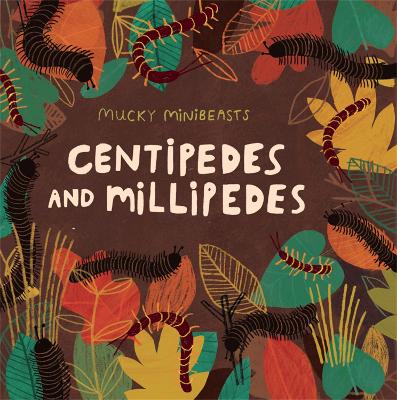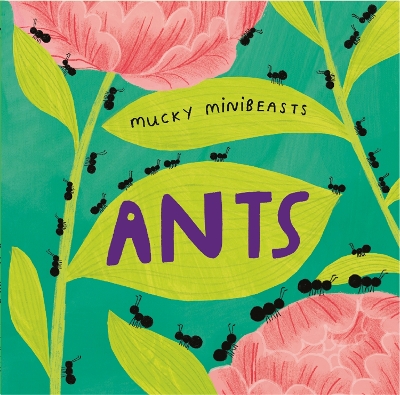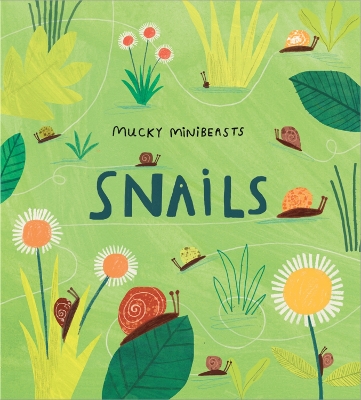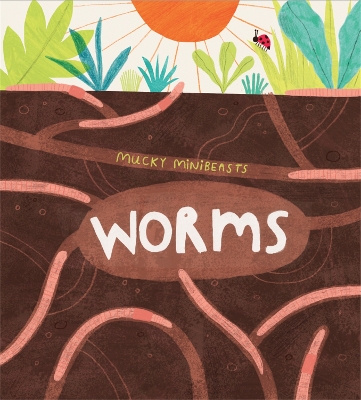Mucky Minibeasts
4 total works
Explore the wonderful world of centipedes and millipedes!
Everybody loves beautiful bees and butterflies, but what about kids who like more mucky creatures - the ones that live down in the dirt or eat their own poo? These minibeasts are just as deserving of attention. This beautifully illustrated title will explore the wonderful world of centipedes and millipedes.
Living down in the dark, damp places, find out the similarities and differences between these two creatures. How many legs do they really have? Why do you rarely see them in bright sunlight? How do they defend themselves from predators? What do these creatures look like in other places around the world?
Find out how to make a terrarium and watch millipedes close up.
Accessible, fact-filled text combined with cute, beautiful artwork results in a stunning non-fiction picture book.
Ideal for allowing children to learn more about minibeasts, but also for introducing them to habitats and understanding other living creatures.
Why not find the other titles in this series, too, about Ants, Snails and Worms.
This beautifully illustrated title explores the wonderful world of ants!
Everybody loves beautiful bees and butterflies, but what about kids who like more mucky creatures - the ones that live down in the dirt or eat their own poo? These minibeasts are just as deserving of attention.
This beautifully illustrated title explores the wonderful world of tiny ants. Did you know that ants will eat almost anything they can find, including fruit, fungus and dead animals. Find out more fascinating facts with this wonderful book about ants.
Accessible, fact-filled text combined with cute, beautiful artwork results in a stunning non-fiction picture book.
Ideal for allowing children to learn more about minibeasts, but also for introducing them to habitats and understanding other living creatures.
Look out for the other titles in the series too: Snails, Centipedes and Millipedes, Worms.
Everybody loves beautiful bees and butterflies, but what about kids who like more mucky creatures - the ones that live down in the dirt or eat their own poo? These minibeasts are just as deserving of attention. This beautifully illustrated title explores the wonderful world of the slithering snails.
Did you know that snails can be brown, yellow, red or pink? Or that their top speed of 45 miles an hour or 1 cm per second, makes them one of the slowest creatures on Earth? Their amazing silvery slime means that they can move safely over sharp objects. Find out more about these amazing mucky minibeasts.
Full of facts, the accessible text combined with cute, beautiful artwork results in a stunning non-fiction picture book.
Ideal for allowing children to learn more about minibeasts, but also for introducing them to habitats and understanding other living creatures.
Look out for the other titles in the series too: Ants, Worms, Centipedes and Millipedes.
Everybody loves beautiful bees and butterflies, but what about kids who like more mucky creatures - the ones that live down in the dirt or eat their own poo? These minibeasts are just as deserving of attention. This beautifully illustrated title will explore the wonderful world of the slimy worms.
Worms are amazing creatures. They get rid of dead leaves and animals from the ground. Their poo makes soil full of goodness so that plants grow tall and strong. But did you know that worms don't have eyes or lungs or teeth? Or that if a worm is in sunlight for more than an hour, they'll die. Find out all about these incredible, but mucky, minibeasts.
Full of facts, the accessible text combined with cute, beautiful artwork results in a stunning non-fiction picture book.
Ideal for allowing children to learn more about minibeasts, but also for introducing them to habitats and understanding other living creatures.
Look out for the other titles in the series too: Ants, Snails, Centipedes and Millipedes.



